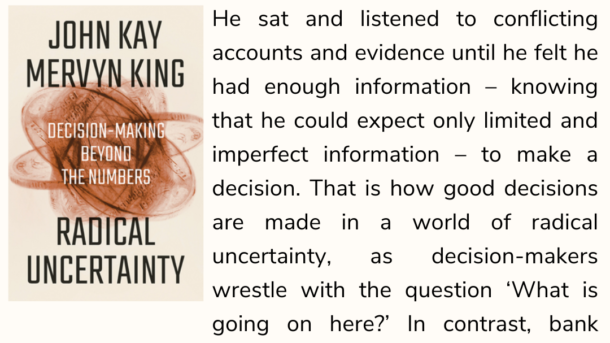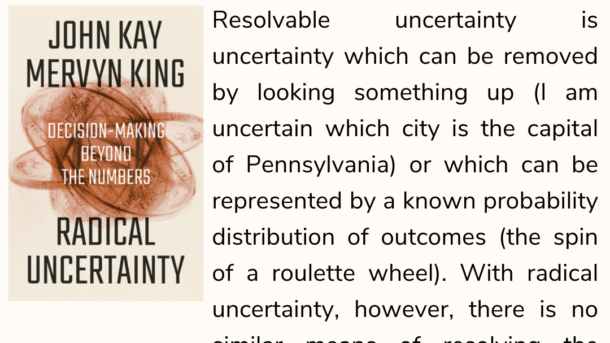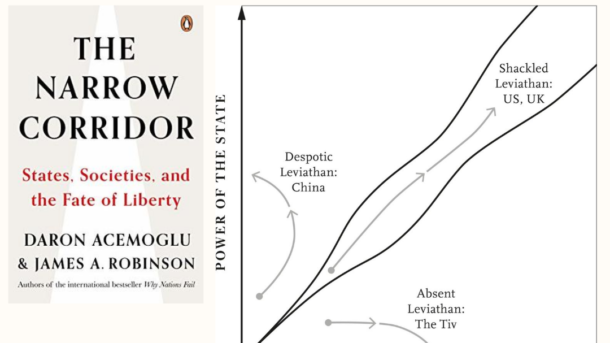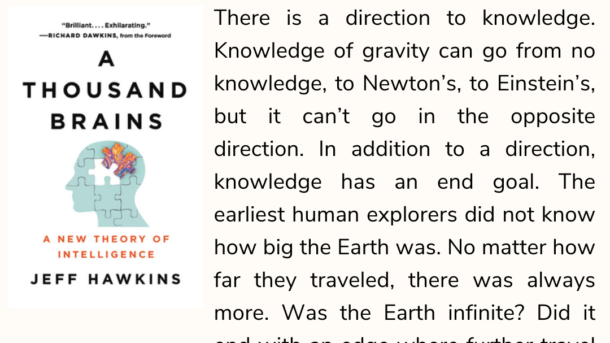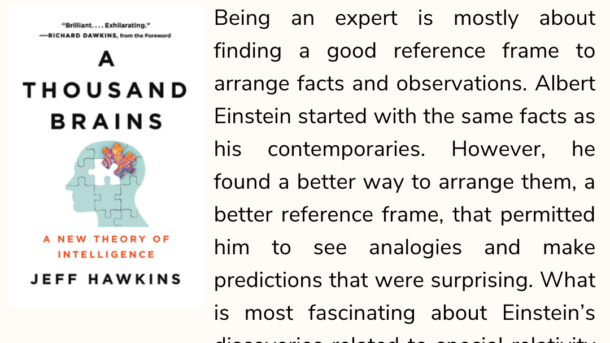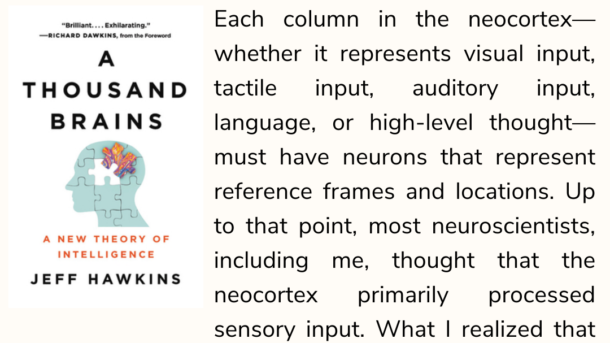Tetlock’s assessment of the accuracy of historical forecasts provides useful insight into what characterises reliable and unreliable predictors. Few readers will be surprised that Tetlock learnt from his initial work that the forecasters in his sample were not very good; little better than a chimpanzee throwing darts. What is, perhaps, most surprising is that he found that the principal factor differentiating the good from the bad was how well known the forecaster was. The more prominent the individual concerned, the more often the forecaster is reported by the media, the more frequently consulted by politicians and business leaders, the less credence should be placed on that individual’s prognostications. Tetlock’s intriguing explanation draws on the distinction, first made by the Greek poet Archilochus, developed by Tolstoy and subsequently popularised by Isaiah Berlin, between the ‘hedgehog’ and the ‘fox’. The hedgehog knows one big thing, the fox many little things. The hedgehog subscribes to some overarching narrative; the fox is sceptical about the power of any overarching narrative. The hedgehog approaches most uncertainties with strong priors; the fox attempts to assemble evidence before forming a view of ‘what is going on here’. We both have the experience of dealing with researchers for radio and television programmes: if you profess an opinion that is unambiguous and – for preference – extreme, a car will be on its way to take you to the studio; if you suggest that the issue is complicated, they will thank you for your advice and offer to ring you back. They rarely do. People understandably like clear opinions but the truth is that many issues inescapably involve saying ‘on the one hand, but on the other’. The world benefits from both hedgehogs and foxes. Winston Churchill and Steve Jobs were hedgehogs, but if you are looking for accurate forecasts you will do better to employ foxes. Tetlock’s current good judgement project, intended to create teams who are not only good at forecasting but who become better with experience, is designed to educate foxes.
The kind of behaviour and personalities that simplify issues and make clear 1-sided opinions tend to make for better TV and entertainment. Unfortunately, we are all predisposed towards preferring simple and easily understood narratives.
This tendency manifests itself in the kind of influencers and the content we see on social media today. Whether it be a do step 1, 2 and 3 and get rich or a “us against them” or another “rags to riches” kind of narrative. We tend to subscribe to these ideas because they easily imprint on our minds, its easier to buy in and you don’t have to wrestle against contradicting ideas in your head.
The above might be good for clarity, but wouldn’t be helpful if you need accuracy. If you’ll like to find out the correct judgmenets, then people whom might superficially appear to be indecisive or slow in committing might actually be the one’s whom advice you should eventually take.
Its also why I always take advice with a pinch of salt from someone who is “so sure” about things. Or from seniors who tell you that, unequivocally, that there is only 1 way to succeed and their path is the only one you should take.
